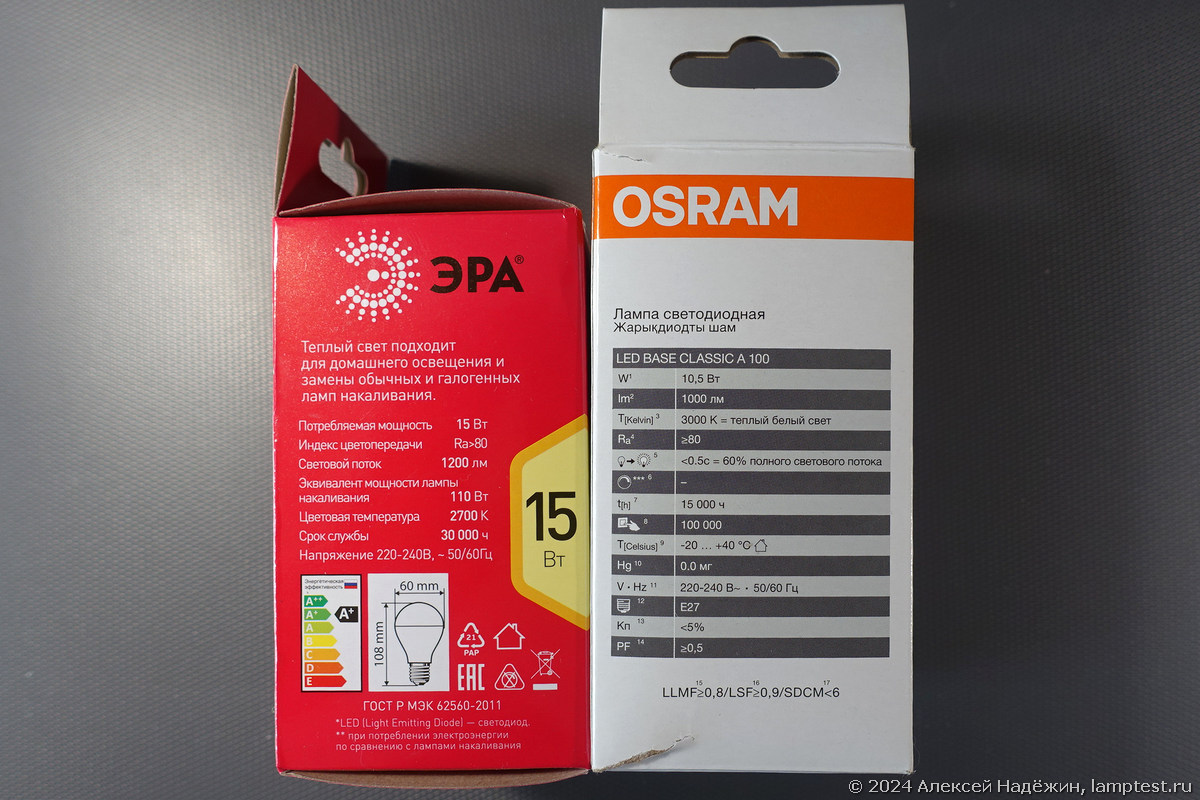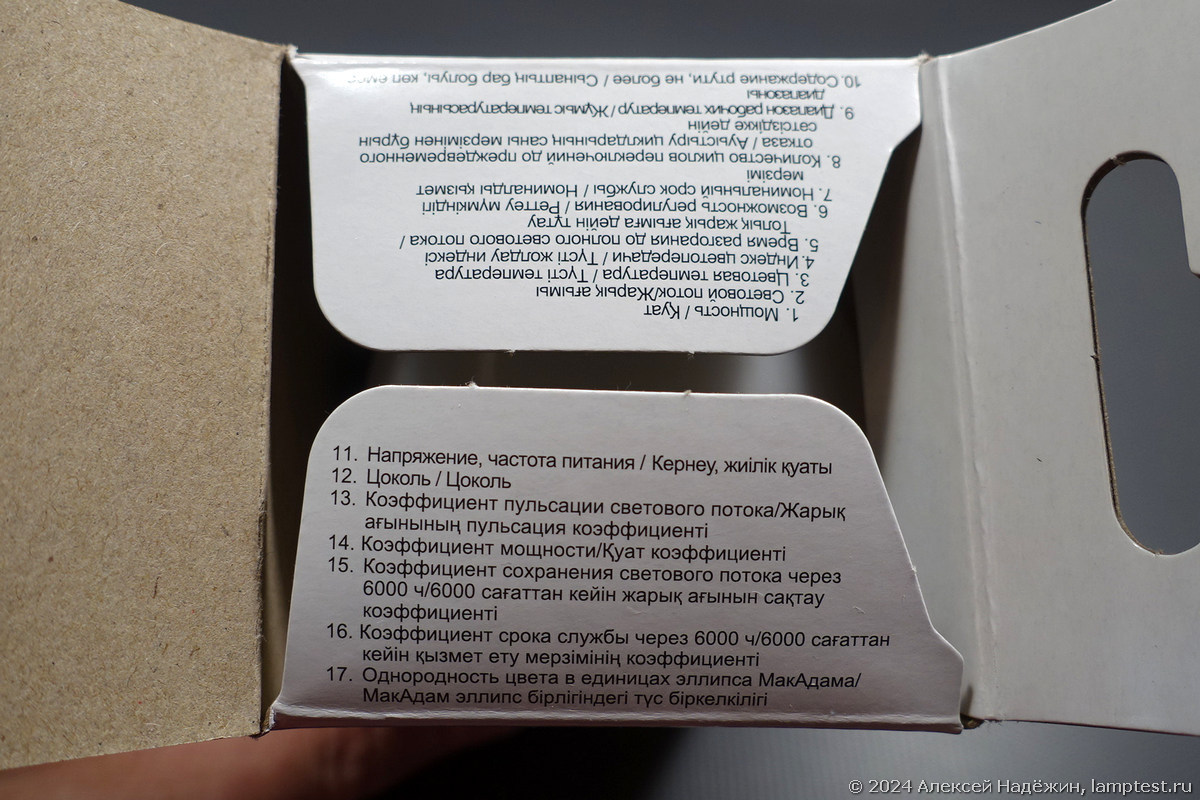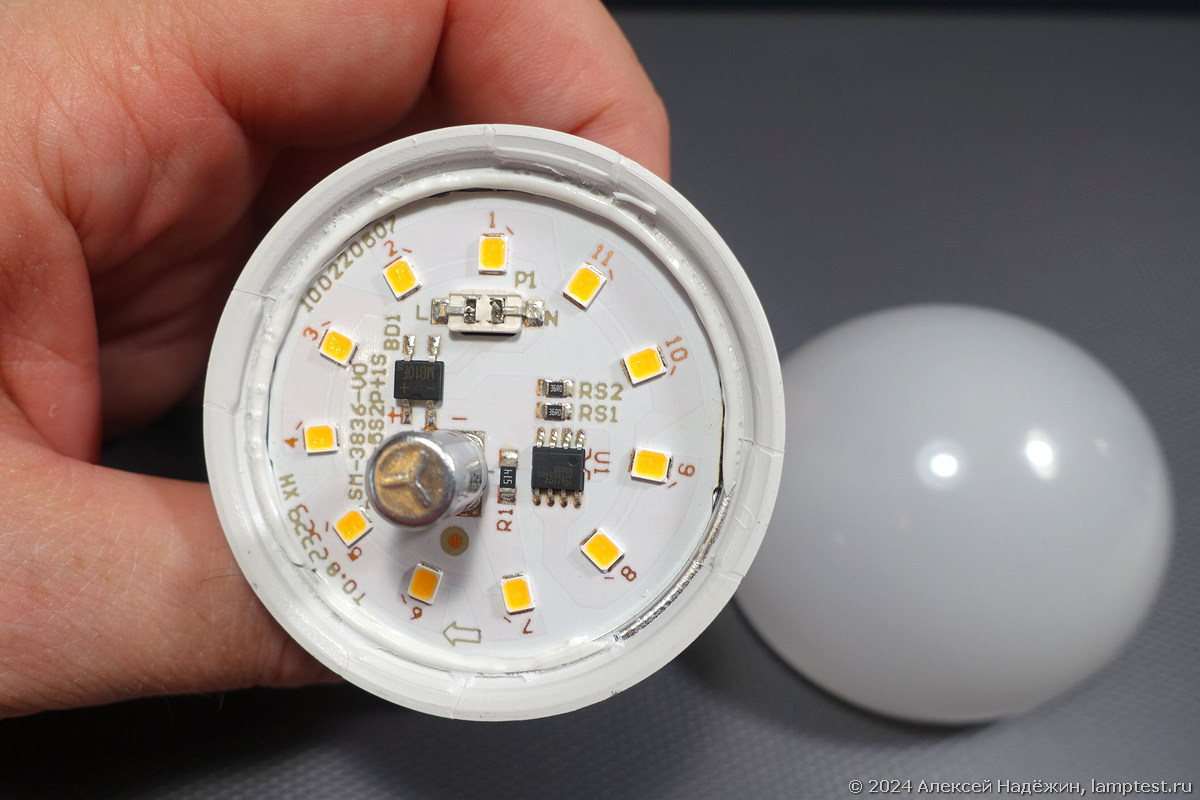ERA and OSRAM light bulbs from the Fix Price store
In Fix Price, next to each other on the same shelf are ERA 15 W lamps for 79 rubles and OSRAM 10.5 W lamps for 99 rubles. Surely most buyers choose “more powerful and cheaper,” but you probably already guess the catch. I bought both bulbs and measured their parameters.


The packaging of the “ERA LED A60-15W-827-E27 R” lamp indicates a power of 15 W, luminous flux of 1200 lm, equivalent to an incandescent lamp of 110 W, service life of 30,000 hours.
On the packaging of the lamp “OSRAM LED BASE CLASSIC A 100 LBE CLA100 10.5W/830 230V E27 AC31229” the power is 10.5 W, luminous flux 1000 lm, equivalent to an incandescent lamp 100 W, service life 15,000 hours.
Both lamps have a color rendering index of Ra>80, a voltage of 220-240 volts, a color temperature of 2700K for Era and 3000K for OSRAM.

But what really? I measured the parameters of the lamps in my laboratory Lamptest.ru and received the following results.

OSRAM has almost everything honestly: the power and luminous flux are even a little more than stated, the equivalent is written “100 W”, but a 95-watt incandescent lamp at a mains voltage of 220 volts produces about 1100 lm, and at 230 volts about 1300 lm.
For the “fifteen-watt” Era, the measured power turned out to be only 7.3 W, the luminous flux was 736 lm, which corresponds to a 70 W incandescent lamp, and not at all 110 W, as written on the box.
And Era’s measured color rendering index turned out to be 73, so this lamp should not be used for lighting residential premises at all (it is believed that for such lighting the color rendering index CRI (Ra) should be at least 80), and its sale is illegal: Decree of the Russian Government No. 2255 prohibits the production and sale of LED lamps with a color rendering index of less than 80. I note that exactly the same lamp with a production date of 08.2023 had a measured color rendering index of 83, but Fix Price sells 2022 lamps with a low index.
Both lamps are built on linear drivers, as a result of which their brightness changes when the voltage in the network changes and when the voltage is less than the nominal (230 V), light pulsation appears, the intensity of which increases as the supply voltage decreases.
I make three measurements of the ripple coefficient – at 230, 220 and 207 V. 230 volts is the nominal voltage in the network according to GOST, 220 volts is the old standard, while this voltage is still used in many regions, 207 volts is the minimum voltage in the network , acceptable according to GOST.
The above-mentioned Resolution No. 2255 sets the maximum light pulsation factor of LED lamps at 10%, Era “fits” into this threshold only at 230 V, OSRAM at 220-230 V. At a voltage of 207 volts, the light pulsation of both lamps may be slightly noticeable visually.
In general, lamps with linear drivers are not suitable for areas where the network voltage is low. In the table I indicated the voltage (Umin) at which the luminous flux (brightness) drops by 5%, at lower voltages the brightness will decrease significantly, and at 180 V, which, although unacceptable according to GOST, sometimes occurs where electrical networks are overloaded, The brightness will drop several times.
I cannot predict how long these lamps will last. On the box of the Era lamp there is a warranty period of 1 year, on the box of the OSRAM lamp it is written that the warranty is void if the lamps are used for industrial and commercial purposes, and the warranty period itself is not indicated anywhere.

I did not carefully study the Era lamp as it was not of interest due to its low color rendering index.
You may have noticed the mysterious inscription “LLMF≥0.8/LSF≥0.9/SDCM<6” at the bottom of the OSRAM lamp box. On one of the flaps of the box there is a decoding of what it all means.

The OSRAM lamp has a single-board design (DOB – Driver On Board). The board contains 11 one-watt LEDs, an ICL1102 linear driver chip, a diode bridge, and a 6.8 uF 400 V 105° capacitor. There are two current-setting resistors – RS1 and RS2, 36 Ohms each (if you break one, the brightness and power will decrease by almost half, but the lamp will become almost eternal).

The lamp body heats up to 67°. The thermal imager shows 82° on the LEDs. In reality, of course, more.

A very small Fixprice shelf is a vivid illustration of what is happening in the LED lamp industry.

Those who honestly indicate the parameters find themselves in a disadvantageous position: next to them there are light bulbs that say more power, more luminous flux, more equivalent, and they are also cheaper. Ordinary buyers will choose cheap light bulbs with the “best parameters”, without even realizing that in reality everything is completely different.
That is why there are very few brands left that honestly indicate the parameters. I will never be able to test all commercially available light bulbs in my Lamptest.ru project, but from the models that are tested, you can always get a general idea of the brand and whether it overestimates the parameters of its lamps.
© 2024, Alexey Nadezhin




